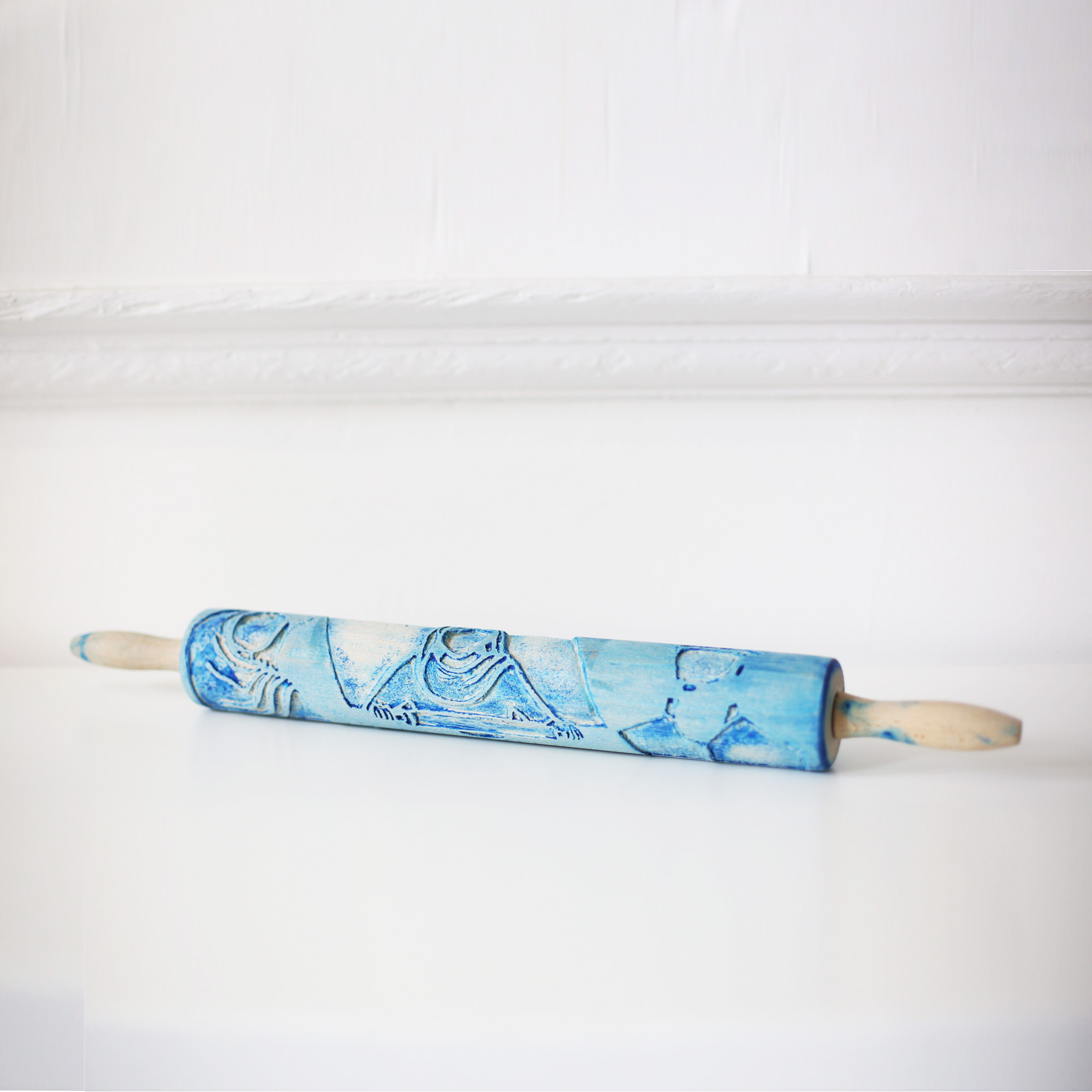Repetition and the Sacred
The act of making roti, especially for a large extended family, is highly repetitive. Sometimes you can end up making 20-30 rotis in one go. Making more than necessary is seen as frivolous. The roti maker is usually the last to eat – making sure that everyone has exactly the amount they require. Roti is seen as sacred. If there does happen to be any left over, the roti is broken down into smaller morsels and given to the birds to eat. As such, no grain is gone to waste.
The Rolling Pin
Using the rolling pin I explore print making and the process of repetition by engraving, scoring, and reshaping the pin. In a decisive act of transformation, I subvert the use of a rolling pin, from a traditional domestic utensil used in South Asian staple food, and turn it into a print making object that can convey message and tell a story.
Pattern and Allegory
The limited surface area of the rolling pin means the printed outcome is a continuous repeat pattern. Using the same motif, but changing the dialogue and internal thoughts of the characters, I ask, can we change our relationship to a situation based on how we think about it? The final strip of the three, in yellow, suggests a re-working of the archetypal South Asian family dynamic. Can we heal and move forward whilst holding on to cultural heritage that provides identity and binds us together? Can I begin to cook roti again, shedding the old limited notions I’d learnt, and find new meaning for roti in my life? And most importantly, can we do this together?
Due to Covid restrictions, the exhibition had to close early to the public. See video for is a guided tour of the exhibition, by artist Yas Lime.








